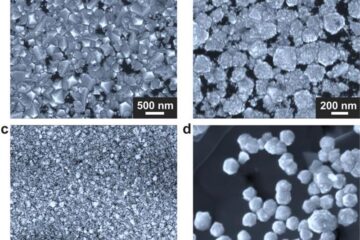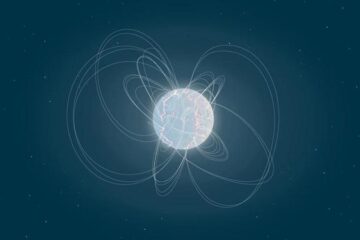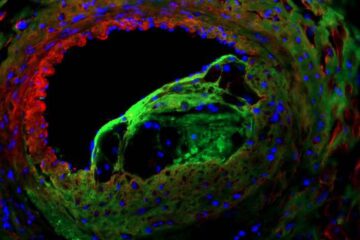Researchers Find Acidic PH Microenvironments in Tumors Aid Tumor Cell Survival

Their research investigating the effects of acidity on breast and pancreatic cancer cell lines revealed the importance of autophagy in acidic microenvironments and suggests that a successful treatment strategy might be based on this autophagic dependence.
The study appears as the cover story for the Aug. 15 issue of Cancer Research, a publication of the American Association for Cancer Research.
“Cancer progression is a multistep process strongly influenced by the physical properties of the tumor microenvironment,” said Robert J. Gillies, Ph.D., corresponding author of the study and chair of Moffitt’s Department of Cancer Imaging and Metabolism. “Both low oxygen and high acidity can be cytotoxic. Our research suggests that adaptation to these stressful conditions involves autophagy allowing cancer cells to survive, proliferate and eventually metastasize to secondary sites.”
According to the authors, not much is known about cell survival mechanisms under acidic conditions, but it has been demonstrated that acidosis can alter gene expression leading to cell types that are adapted for growth and survival in low pH conditions. Identifying low pH survival mechanisms would “give further insight into tumor progression and potentially introduce novel therapeutic strategies,” researchers said.
In this study, the researchers tested cancer cell lines under acidic conditions to learn more about autophagy and cellular adaptation. They noted that normal cells in the acidic environment can respond to acidic stress by increasing cell death pathways, thus introducing the need for survival and adaptive mechanisms by cancer cells.
The researchers also noted that their experiments were carried out under atmospheric oxygen levels and they found that the cell’s stress response could lead to chronic autophagy even when nutrients and oxygen were in adequate supply.
“We found that cells subjected to transient and chronic low pH growth conditions demonstrate elevated markers for autophagy and are dependent on this process for prolonged survival in acidic environments,” explained Jonathan W. Wojtkowiak, lead author of the study and postdoctoral fellow at Moffitt. “A hallmark of cancer is the ability of cancer cells to evade apoptosis. Autophagy supports this by playing a tumor promoter and survival role under certain circumstances during different stages of tumorogenesis.”
Their study demonstrated the importance of autophagy in low pH-adapted breast and pancreatic cancer cell lines and the dependence of these cells on autophagy for survival to acidic tumor microenvironment. According to the researchers, they identified a potential therapeutic strategy of using an autophagy inhibitor, one that does not affect cells under neutral conditions.
Funding for the study came from National Institutes of Health grants R01 CA077575, U54 CA143970 and R01 CA 131990.
About Moffitt Cancer Center
Located in Tampa, Moffitt is one of only 41 National Cancer Institute-designated Comprehensive Cancer Centers, a distinction that recognizes Moffitt’s excellence in research, its contributions to clinical trials, prevention and cancer control. Since 1999, Moffitt has been listed in U.S. News & World Report as one of “America’s Best Hospitals” for cancer. With more than 4,200 employees, Moffitt has an economic impact on the state of nearly $2 billion. For more information, visit MOFFITT.org, and follow the Moffitt momentum on Facebook, twitter and YouTube.
Media release by Florida Science Communications
Media Contact
More Information:
http://www.moffitt.orgAll latest news from the category: Health and Medicine
This subject area encompasses research and studies in the field of human medicine.
Among the wide-ranging list of topics covered here are anesthesiology, anatomy, surgery, human genetics, hygiene and environmental medicine, internal medicine, neurology, pharmacology, physiology, urology and dental medicine.
Newest articles

Making diamonds at ambient pressure
Scientists develop novel liquid metal alloy system to synthesize diamond under moderate conditions. Did you know that 99% of synthetic diamonds are currently produced using high-pressure and high-temperature (HPHT) methods?[2]…

Eruption of mega-magnetic star lights up nearby galaxy
Thanks to ESA satellites, an international team including UNIGE researchers has detected a giant eruption coming from a magnetar, an extremely magnetic neutron star. While ESA’s satellite INTEGRAL was observing…

Solving the riddle of the sphingolipids in coronary artery disease
Weill Cornell Medicine investigators have uncovered a way to unleash in blood vessels the protective effects of a type of fat-related molecule known as a sphingolipid, suggesting a promising new…





















